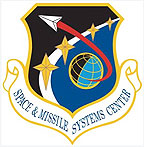
Kratos Defense & Security Solutions, Inc. (Nasdaq:KTOS) has revealed that their Kratos RT Logic subsidiary won an award for the Pilot Phase 2 program — this effort will implement a proof-of-concept system enabling an enterprise solution to increase the capacity and resiliency of wideband satellite communications (SATCOM).
Kratos’ system will enable government satellite users to roam, similar to the way cell phone users roam through multiple cellular networks. This will be demonstrated with a Flexible Modem Interface (FMI) that enables secure communication across multiple operator networks, in multiple frequency bands, utilizing diverse waveforms and modems. It will show implementation of critical command and control (C2) capabilities allowing an existing U.S. government terminal to switch to different satellites if the main satellite is compromised, enhancing resiliency through path diversity and enabling global service connectivity to multiple available networks.
Under the terms of the award, Kratos will also demonstrate a prototype government network operating center (GNOC) function that responds to user requirements and service provider capabilities. The function interfaces to SATCOM gateways and remote terminals, provides situational awareness, and successfully mitigates threats.
Kratos is supported on this effort by a world-class team of satellite operators to execute the program, including Intelsat General, SES Government Solutions, and Inmarsat. The program is sponsored by the Space and Missile Systems Center, MILSATCOM Systems Directorate, Advanced Concepts Division (SMC/MCX).

Joseph Vanderpoorten, SMC/MCX Division Chief, said that the Pilot Phase 2 initiative realizes new concepts for enabling more flexible and resilient use of wideband SATCOM resources.
Mike Rice, VP of Satellite Ground Systems at Kratos, added that the commercial product solution illustrates how minor modifications to existing government terminals can create the ability to seamlessly leverage multiple commercial SATCOM resources. The U.S. government will have the capability to utilize efficiencies developed within the commercial sector to improve the responsiveness of wideband SATCOM, increase capacity and enhance space situational awareness, all while supporting a more resilient enterprise ground architecture.

